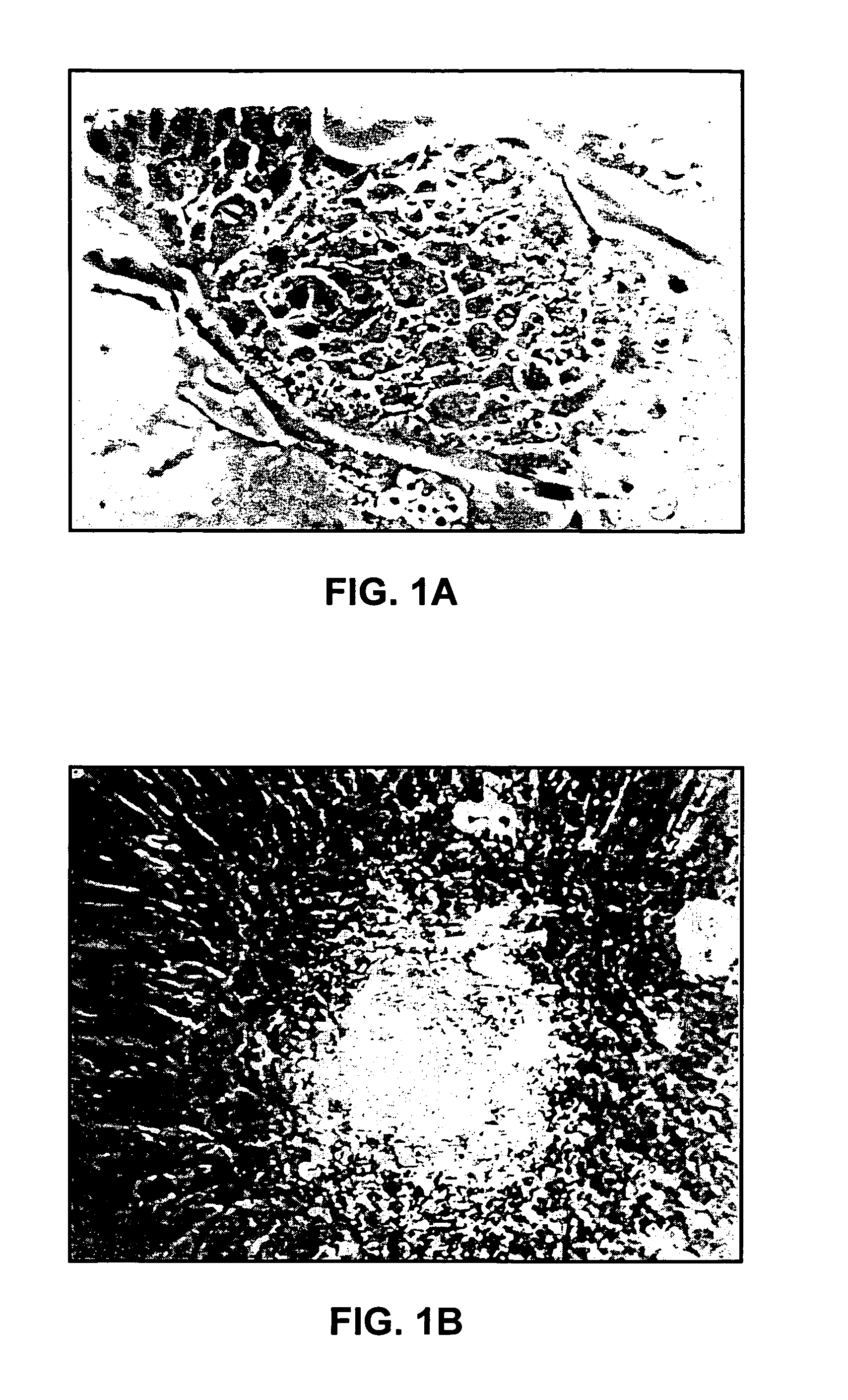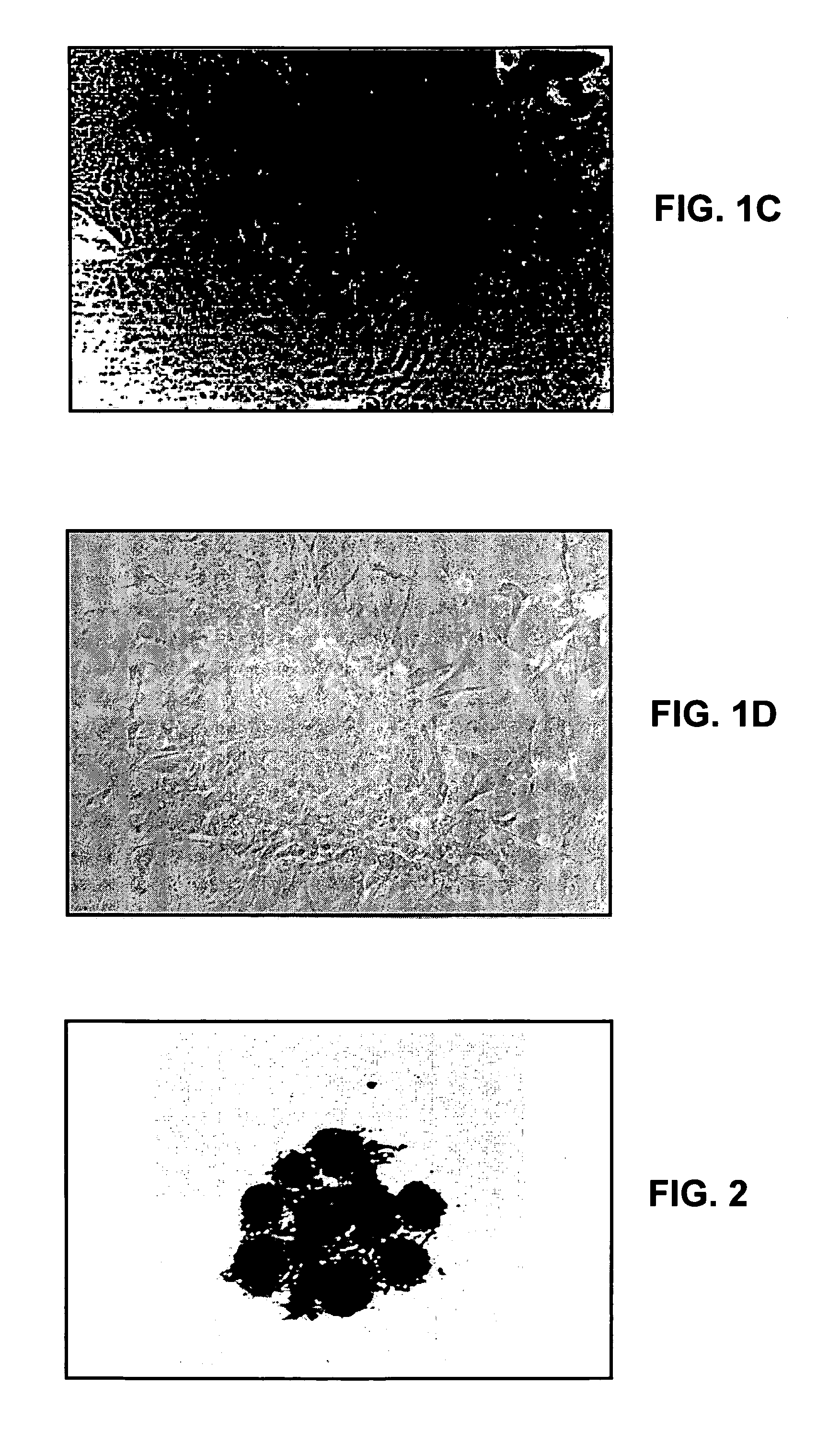Transgenic ungulate compositions and methods
a technology of ungulates and compositions, applied in the field of transgenic ungulate compositions and methods, can solve the problems of inability to readily and reproducibly produce transgenic large mammals such as ungulates at reasonable costs, inability to produce transgenic large animals, and inability to meet the needs of large-scale commercialization, so as to improve the quality of an ungulate
- Summary
- Abstract
- Description
- Claims
- Application Information
AI Technical Summary
Benefits of technology
Problems solved by technology
Method used
Image
Examples
experiment 2
[0235]In experiment 2 the effect of number of cells injected on tumor incidence was assessed. Injections of 2×106, 2×104, 2×102 or 0 were each made in the testes of 4 mice. After 17 cells only the 2×106 group (4 / 4) had grossly visible tumors. One mouse in the 2×104 group (1 / 4) had a teratoma identified histologically. In the 2×106 group the total tumor weight ranged from 0.73 g to 2.66 g. Abdominal metastases to the mesentery were present in all mice. Nervous and glandular-like tissues were consistently identified in the teratomas with variable amounts of keratinized skin, ciliated epithelial cells, goblet cells, and cartilage.
[0236]Because the ES-D3 cells are derived from female embryos, experiment 3 compared the ability of tumors to form in male and female mice injected with 2×106 ES-D3 cells into the kidney. Teratomas occurred in both male (6 / 6) and female (6 / 6). Metastases were found in 66% of the female and only 33% of the males in this experiment. Mean tumor weight was not dif...
PUM
| Property | Measurement | Unit |
|---|---|---|
| Length | aaaaa | aaaaa |
| Volume | aaaaa | aaaaa |
| Molar density | aaaaa | aaaaa |
Abstract
Description
Claims
Application Information
 Login to View More
Login to View More - R&D
- Intellectual Property
- Life Sciences
- Materials
- Tech Scout
- Unparalleled Data Quality
- Higher Quality Content
- 60% Fewer Hallucinations
Browse by: Latest US Patents, China's latest patents, Technical Efficacy Thesaurus, Application Domain, Technology Topic, Popular Technical Reports.
© 2025 PatSnap. All rights reserved.Legal|Privacy policy|Modern Slavery Act Transparency Statement|Sitemap|About US| Contact US: help@patsnap.com



